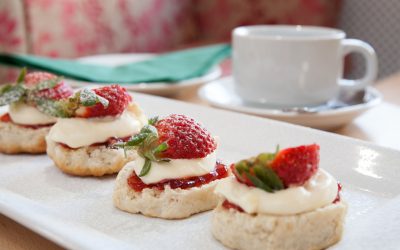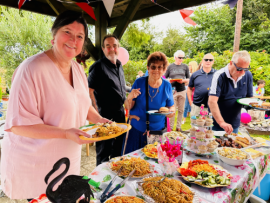Black Swan Care Group staff take part in farm to fork experience
01/01/2020

Chefs from Chiswick House in Norwich and The Beeches Residential Home in East Harling spent a day with representatives from Thomas Ridley Food Service last Monday, seeing the full life cycle of the animals which they serve.
The main aim of the visit was to experience the life cycle of the meat we provide to our residents from birth to death, to know the environmental impact and quality of the products we put into our care homes.
By partnering with Thomas Ridley Food Services we will be able to provide local meat and vegetables to our kitchens which are sourced locally, and sustainably.
This now means that 99% of the products in our homes from food to toilet paper, along with soaps and lotions comes from East Anglia as we feel there should be a real emphasis on supporting local businesses.
Visiting The Farm


The first stage of the visit took us to F.J.Bosworth & Son’s farm in Willingale, Essex to meet with farmer Jack Bosworth. Jack is the 4th generation of Bosworth’s to breed and finish pigs on the site, and like his father and grandfather before him – he is very proud of the livestock he produces.

To begin we saw the newborn piglets suckling from their mothers, contained in special aluminum rigs to prevent unnecessary deaths of the young boars and sows which commonly occur when the mother rolls on top of them.

We then attended the slurry collection point and were informed of the farm's sustainable promise; by growing their own crops to feed their livestock and repurposing the slurry as manure, along with the entire farm being powered from the surrounding field of solar panels – they are as close to self-sufficient as they can currently get. They also reduce food miles by only supplying local businesses with their meat, with the aim of limiting their carbon footprint.

Unlike some farms F.J.Bosworth and son’s do not dispose of the runts of the litter, instead placing the smaller offspring into different areas with richer food sources enabling them to grow to the size of their larger counterparts in the same amount of time.

Stuart’s family has been in the pig business for over one hundred years, and runs the entire farm with only three stockmen who have over sixty years experience in the industry between them. We saw pens of pigs from as young as three days old to fully mature adults at the weight of over 50 kilograms.

Visiting The Abattoir


We drove a short distance from the farm to the abattoir to experience how the animals' lives ended. The facility was a clean and safe environment, with fully trained slaughterhouse workers doing their jobs in a quick and efficient way.

There were rooms of hanging meat on hooks in refrigerated units ensuring the freshness of the meat, all edible products were stored on specially designed pieces of equipment and recorded with unique codes. The skin and pelts of the animals slaughtered at the facility are sold on to be used in the fashion industry – with the company believing if an animal is going to be killed then as much of it as possible should be used.

We entered the slaughterhouse area where the animals' lives are ended and observed the respect and precision of the staff who carry out the task. The animals are dealt with using a blade to the neck killing them instantly before being hung and bled, cleaned, and then moved into the refrigeration units – with the whole process taking mere seconds.
Visiting The Butchers


We then continued our tour where we attended the Traymoor Limited Quality Meats facility in Ongar, Essex. Representatives from the company showed us the delivery area, explaining the vault-like doors of the walk-in refrigerators which ensure the freshness and quality of the product, before taking us through the butchery.
The meat is stripped from the bone and only the smallest scraps of the carcass are placed in the bin, with bones being recycled to make stocks to ensure a better carbon footprint and less waste at the facility.
Butchers expertly sliced and diced the meat before the production line packaged the products before being placed into refrigerated or frozen units.
At the end of the experience we asked our chefs what they thought:
“I’d never been to an abattoir before and I was shocked at how clean the facility was aside from the blood, the entire place gleamed and barely any of the animal was wasted which I think is a real plus” – Caroline (Chef at Chiswick House)

“I found it a very unique and eye-opening experience to watch an animal's life play out in a day like that, but I was relieved to see how well cared for the animals were. I think it tells you a lot about a person – when they’re fully transparent and proud of their product. You could see that Stuart had a real love for his animals and made sure he got the best product by giving them everything they needed” – Wendy (Chef at The Beeches)
We’re proud to be able to say that we know exactly where the meat we serve in our care homes comes from, and that it is being sourced in an environmentally friendly way by local companies.
View Our Homes
We have many care homes throughout the East of England, providing high-quality care to our residents. Get in touch with our team today.





